Golubika garden - valuable berry, rich in mineral salts, organic acids, vitamins. Contains tissue, sugar, pectins, tanning substances. Currently, it is quite popular and grown on an industrial scale in European countries such as Germany, Austria, Poland, Holland.
Unpretentious culture, however, for growing and obtaining a high quality harvest, you need to know some features of planting and growing this valuable plant.
Garden Blueberry: Description
The nearest relatives of blueberries occur such berries like blueberries, cranberries, lingonberries. In appearance, shrubs and berries of blueberries look like a blueberry, but the color of the branches, the structure of the color and the taste of the berries they have different. The root system of the plant is urine, feeds with the help of mycorrhiza. Branches with dark bark, young shoots of green. The height of the lowest blueberries to one meter, selection tall grades grow to 2 meters. The leaves of small size, dense, smooth, up to 3 centimeters long, are alternate on the cutters alternately. White or slightly pinkish flowers, blueberry blooms on the branches of past years. Berries are blue or blue, with a matte bloom. In ordinary wild blueberries, the weight of the berries is only before gram, the form is oblong. The varietal blueberry gives berries of 10-20 grams, and with one adult bush collect up to 7-9 kg of berries. For growing in the middle lane, varieties with early and medium ripening periods are suitable, since the late do not have time to completely ripen before the onset of cold weather.
Landing garden blueberries
Blueberry - a berry is special, and it should be landed with special attention, the choice of the wrong site can lead not only to the absence of harvest, but also to the death of the plant. In the natural habitat, blueberries grows both near streams, water bodies and plains, occupying huge territories. It is found almost on the entire northern hemisphere, in the area where the cold and temperate climate prevails.
Landing place garden
Place for planting is chosen well lit. In the shadow of the berries there will be fewer and taste of them will be low. The site is chosen by shrubs, trees, hedge, because icing leads to extrusion of the above-ground part of the plant. The varietal blueberry is not so frost-resistant as her wild relative.
Soil for planting blueberry garden
Before planting, the acidity of the soil is measured, the required acidity level is from 4.0 to 5.5. If after measurement it turns out that the soil on the site is not sufficiently sour, it must be replaced by artificially creating the necessary conditions for growing shrubs. The perfect soil for blueberries is a gray peat, which represents their herself overwhelming moss. Also for the landing will fit the soil from the pine forest. To do this, the soil is gaining from the area under the trees, where nothing grows, removing the top layer of about 10 cm, with branches, needles, cones. The acidity of such a litter is great for planting blueberries. In addition, it is possible to purchase the finished primer with the necessary acidity.
Sadow blueberry landing time
On a permanent place, the shrub is planted in spring or autumn. It is preferable to spring landing, since over the summer the young plant will grow enough to move the winter frosts well.
Children's blueberry seedlings
For landing, they buy a sage of blueberry garden with a closed root system, in a pot. Preference gives plants of age for 2-3 years. Such seedlings have a fairly developed root system to move well a change.
For cultivation in the northern regions, where the temperature in the winter is lowered quite low, choose the lowest varieties of blueberry of Canadian origin, since the average and tall varieties have a weaker frost resistance.
How to plant garden babies
- A pit for planting blueberries dig up with a diameter of 60-80 cm and a depth of 40-50 cm. The soil is completely removed, the pit is filled with cooked sour soil for planting. It is recommended to prepare a seat in advance for a month and a half before landing.
- In the new soil form a deepening of a potted pot with a sapling, but a little deeper. Sabero seedlock Garden carefully removed along with an earthen room and lowered in a bucket with water for 15-20 minutes. In the time that the seedling grew in the container, his roots managed to take all the available space and began to spin around a coma from the ground. The roots themselves will crack long enough that will slow down rooting and growth, therefore, before planting a room, they smear the ground, a little kneading, the roots of the seedling are spread.
- The plant is placed in the prepared recess so that its root neck is 5 cm below the level of the surrounding soil. The ground around the seedling is trambed, the landing site is abundantly watered.
- The distance between the seedlings is calculated on the basis of the variety features. Between low-voltage plants, 50 cm are left, between average - 100 cm, between tall - from 120 cm.
Golubic Care
The guarantee of good crop, health and growth of blueberry shrubs - care in compliance with all rules for growing a particular plant.
Watering blueberries
Plants watered twice a week, first of all we need to irrigate tall varieties. It is important to prevent the soil drying during the ripening period of the berries, since at the same time the flower kidney is a laying, on which the crop of next year is depends. Under one bush pour 20 liters of water, watered early in the morning or in the evening.
Undercaming blueberries
Putting into the soil of additional nutrients contributes to improved growth and increase in yield.
- In the spring, undercaming blueberries with mineral fertilizers in 2 stages with a gap between the feeders of 30-40 days are carried out: the first is carried out before the renal dissolve, the second during the vegetation of the plant. The norm of mineral fertilizers for an adult shrub is up to 100 g per season.
- In June, a potash-formy mixture is introduced under each bush, for the preparation of which 80 g of potash, 120 g of phosphate fertilizers are used.
- Organic fertilizers for feeding blueberries are not used.
Purchase care
The plot under blueberries is stolen as weeds appear, but at least 3 times per season. Soil loose on a small depth so as not to damage the roots of the plant, located at a depth of 10-15 cm from the surface of the Earth. Mulch under shrub, if necessary, replenish. The loose, mulched soil absorbs moisture well and keeps it, protecting the plant sensitive to dryness, and protects the root system of the plant in winter from frosts.
Pruning the blueberry garden
To prevent excessive thickening bush produce formative pruning. The first such pruning is carried out at the age of 3 years, before shear only broken or damaged twigs of the plant. The purpose of pruning - to leave on a bush 6-8 strong young shoots. As a rule, cut out a very old shoots, which have almost no yield increase. Also, removal shall be weak, suspicious shoots. In pryamoroslyh varieties primarily removed unnecessary branch in the middle of the bush, in a short, spreading lower branches removed. Pruning is carried out in the spring, before the sap flow, or fall, after the autumn leaf fall.
Harvesting
Berry collection is enough to spend once a week. For use in food, large berries of the sizo blue color are suitable, slightly soft. Dense berries of mature color leave to watch until the next harvest, during this time they will rise in the sugar content, and their taste improves.
Wintering blueberries
In the area where the air temperature in the winter falls below -25 ° C, tall varieties need shelter. For this, the fall of the branches of the blueberry garden is pressed against the ground and fix in such a position with brackets. Then the plant is covered with a vegetable or byproof material, it will protect the branch from frostbite.
Garbike garden breeding
It is possible to increase the number of blueberry shrubs, both by buying new seedlings and independently, using varietal plants on the site. There are 2 methods of reproduction:
- seminal,
- vegetative.
Seed method of breeding
- To obtain seeds from the bush, they collect mature healthy berries, taken out seeds and dried.
- In the fall prepare the landing bed with an acidic peat, the same that was prepared for planting a seedling.
- Seeds sow in the grooves depth 1-2 cm, sprinkled with soil, mulched.
- In the spring, the first shoots will appear on the garden, which require careful care. Weeds from the bed regularly remove, the ground is neatly loosen. Young plants need regular watering.
- After 2 years, the seedlings transplanted at a permanent place.
If for some reason the seeds did not sieve in the fall, it can be done in the spring, but then the seeds need to provide a period of stratification, for which they are placed in the refrigerator in 2-3 months before sowing.
Vegetative breeding method
The vegetative methods of reproduction include:
- drawing
- decision bush.
Shining a simpler method for producing planting material. To obtain a seedling from a cutter, you must perform the following sequence of actions:
- During trimming, which is carried out in late autumn or early spring, cuttings of about 15 cm long cut from strong healthy twigs.
- For better rooting the cuttings, the month is kept at a temperature of +1 to + 5 ° C.
- The cuttings are planted in a mixture of sand with an acidic peat at an angle of 45 °.
- For 2 years, a fairly developed blueberry seedlock grows out of the rooted cutting. Sit it to a permanent place.
Blueberry and the division of the bush multiplies, but this method is quite time-consuming and is not popular. For this:
- Plant digs and divide it so that each above-ground part has formed rhizome at least 7 cm.
- Immediately planted at a permanent place in compliance with sanitary distances between plants.
The seedlings obtained by a vegetative way are beginning to be fronding approximately after 4 years. Harvesting from seedlings will have to wait for 7 years.
Saddow blueberries
Consider some common sorts of blueberry garden grown in Russia.
- Bloucrop (BLUECROP) is one of their most valuable average varieties. In height reaches 1.5-2 m, shoots aperture. Berries are large, about 1.5 cm, slightly flattened. Taste quality high. The timing of ripening is the end of July, the beginning of August. Berries ripen not at the same time. Drought resistance, frost, high diseases. The yield is excellent.
- Blue Ray (Blue Ray) is a medieval, high-yielding grade. A bush is a large, reprehensive, up to 1.8 m high. The berries are about 2 cm in diameter. The flesh is dense, taste high quality. Fruption begins at the end of July and last about 2 weeks. Frost resistance high.
- Erlie Blue (Early Blue) is one of the earliest blueberry varieties, ripening begins at the end of June. Mature berries of light blue color.
- Patriot (Patriot) - high-yielding grade, prone to thickening. Fruits are large, tasty. The mediterranean bush, a reprehensive, with a high growth force. Berries are light blue, flashed, the first are the largest, then smaller. A distinctive feature is high resistance to fungal diseases, which makes it possible to grow a shrub on heavy soils.
Diseases and pests
It is worth noting that the blueberry is sick with fungal diseases, as a rule, due to adverse conditions. Perhaps the soil is too dense, not ventilated, or there is a stagnation of water at the landing site. Delicate landings also create favorable conditions for disease development. Therefore, when treating blueberries from fungal diseases, it is important to identify the cause, and if possible to eliminate it. Stagnation of water can be reduced by providing drainage, the soil surface is to blame and mulch well.
Diseases
Garden blueberries is subject to such fungal diseases as gray rot, moniliosis, various spot. As the prevention of plants, we are treated in the spring and autumn of the Bordeaux mixture according to the instructions. During the growing season, these drugs are used as a chorus, topaz.
Mosaic is found from viral diseases on blueberries, red ring spot, necrosis of branches. Viral diseases are incurable, sick plants destroy.
Pests
Pretty large-scale damage crop brings birds that are very loved by delicious blueberry berries. To protect against birds at the time of ripening of berries, shrubs are covered with a grid.
Love the plant and may beetles that eat leaves and flowers, which significantly reduces the crop. The beetles are collected manually.
The larvae of the beetles approach the roots of the plant. To scare off larvae, the shrub is poured by ammonic alcohol, for which 20 ml is bred in a bucket of water and water.
Early spring to combat insects, shrubs are treated with insecticides. Re-processing is carried out as needed, withsting the waiting time, the last time - in the fall, so as not to leave the winter pests on blueberries.
Golubika Garden: Photo
Blueberry Patriot
Blueberry Northble
Bluebird Blue Blue
Growing Garden Golubika in summer areas has become widespread recently. This was preceded by a long time-consuming breeding work on the removal of new yields of plants. Depending on the area of \u200b\u200baccommodation, gardeners have the opportunity to choose a variety of plants based on individual needs and climatic capabilities. So, in the northern regions, the lowest varieties of blueberries are grown, which, although less yields, but perfectly carry winter frosts. In the middle lane and in the south, the climate allows you to get berries on tall high-yielding varieties. To plant blueberries on his garden plot and get a crop you can and you, following all recommendations for the cultivation of this valuable berry bush.

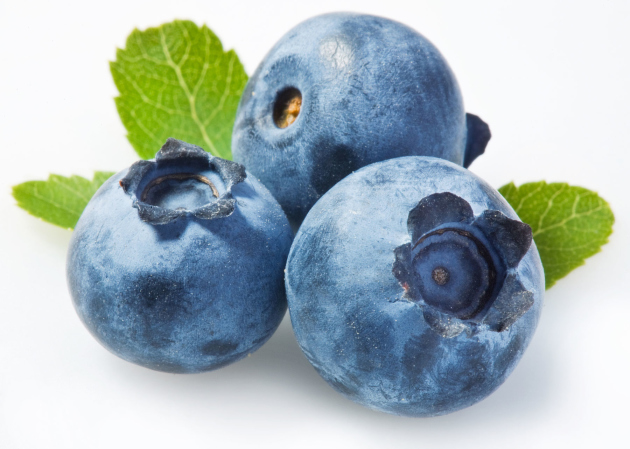
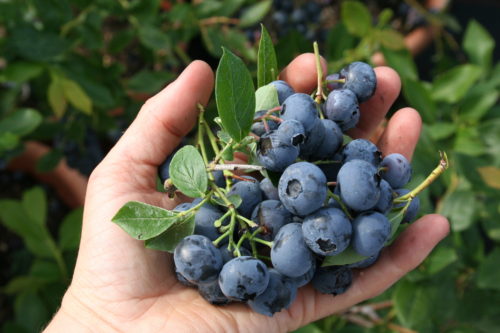
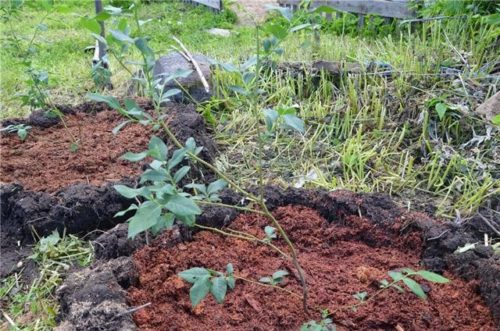
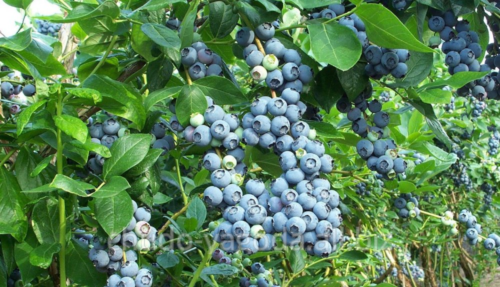
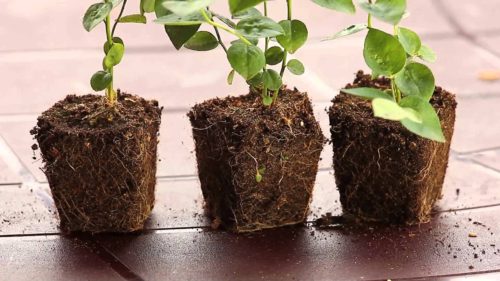

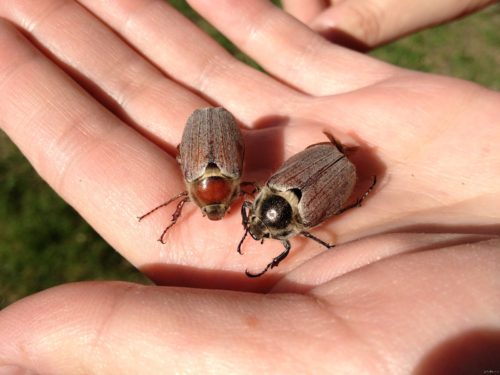
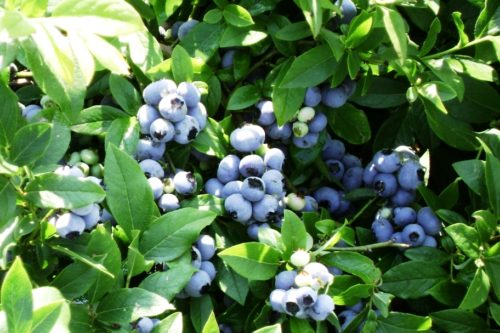
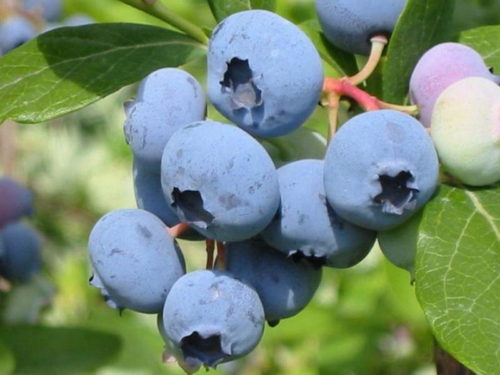
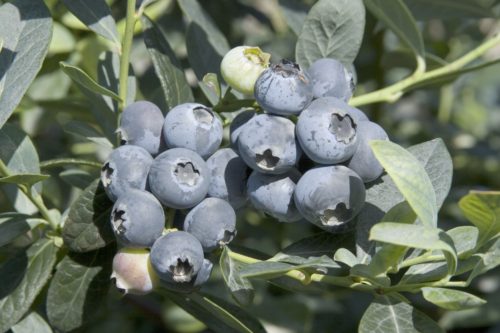












 Start a discussion ...
Start a discussion ...